#middle ages catholism
Text

A medieval Catholic religious wood carving of the Crucifixion.
#traditional catholicism#traditional catholic images#middle ages catholism#middle ages catholic religious wood carving#traditional catholic devotions to our lord's passion#the crucifixion of our lord and savior
177 notes
·
View notes
Text
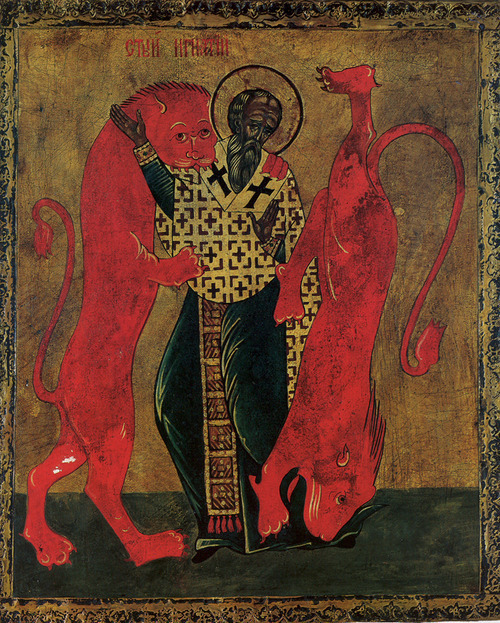
La Bête de la Mer / Tapisserie de l’Apocalypse (Tapestry of the Apocalypse)
Medieval tapestry of the Ignatius of Antioch (Christian saint and martyr)
#art history#art#history#european art#medieval#animals#medieval art#christian art#middle ages#apocolyptic#catholic art#Catholicism#catholic saints#lions#satan#medieval manuscripts#tapestry
1K notes
·
View notes
Text

Book of Hours with calendar for Rome use, 1495, France.
110 notes
·
View notes
Text
Time Travel Question 40: Medievalish and Earlier 7
These Questions are the result of suggestions from the previous iteration.
This category may include suggestions made too late to fall into the correct earlier time grouping, hence the occasional random item waaay out of it's time period.
In some cases a culture lasted a really long time and I grouped them by whether it was likely the later or earlier grouping made the most sense with the information I had. (Invention ofs tend to fall in an earlier grouping if it's still open. Ones that imply height of or just before something tend to get grouped later, but not always. Sometimes I'll split two different things from the same culture into different polls because they involve separate research goals or the like).
Please add new suggestions below if you have them for future consideration. All cultures and time periods welcome.
#Time Travel#Cathars#Middle Ages#Catholic History#Dominicans#Lalibela#Ethiopian History#Kyiv#Ukrainian History#Suzhou#Chinese History#The Sena Dynasty#Bengal#Indian History#Vlad Țepeș#Makapansgat Pebble#Homins#Ramban#Nachmanides#Jewish History#Genghis Khan#Mongolian Empire
119 notes
·
View notes
Text

Silos's pharmacy.
In the ancient Abbey of Saint Dominic of Silos, the old pharmacy has been preserved to these days. In old times, it had a botanic garden, a pharmaceutical laboratory, a very interesting library and hundreds of earthenware pots for potions and remedies.
More information about the Abbey here (EN):
The monastery dates back to the Visigothic period of the 7th century. In the 10th century, the abbey was called San Sebastián de Silos, but acquired its current name when Dominic of Silos was entrusted to renovate the abbey by Fernando the Great, King of Castile and León. Dominic had been prior of the Monasteries of San Millán de la Cogolla before being driven out with two of his fellow monks by King García Sánchez III of Navarre, for opposing the king's intention to annex the monastery's lands.
Ps. Thanks to all the people who has reblogged and liked this post. 😊
#Spain#Middle Ages#St Dominic of Silos#Monasteries#Catholic Monasteries#Visigoths#King Fernando the Great of Castille and Leon#San Millán de la Cogolla#King García Sánchez III of Navarre#Castille and Leon#Navarre
107 notes
·
View notes
Text
americans learn what the middle ages are challenge
#15th century? that's the very very tail end (depending on what landmark you chose for an end)#16th century? ABSOLUTELY THE FUCK NOT#and also the witch hunts weren't really a medieval thing they mostly took place in the early modern era#and largely weren't perpetuated by 'the church'#and the inquisition spanish or otherwise had nothing to do with them#because church doctrine actually was that belief in witchcraft is superstition; only god is all-powerful#yes heinrich kramer called himself institoris. that doesnt mean anything it's just a fancy title he gave himself.#and hey guess what! protestant regions were way worse about killing witches than catholic ones. 'the church'? that's catholicism babe#do you see the flaw in your argument#anyway of course theres not an exact endpoint to the middle ages however#it's a period of a relatively stable socioeconomic system that collapses for various reasons#& things like the witch panic are a symptom of that collapse#so to talk about that in the same breath as *actual* medieval folklore & blame them on 'the church'#(when the catholic church losing power and influence was ALSO part of that collapse!)#is careless and silly#esp when you call yourself a historian#rant over
130 notes
·
View notes
Text

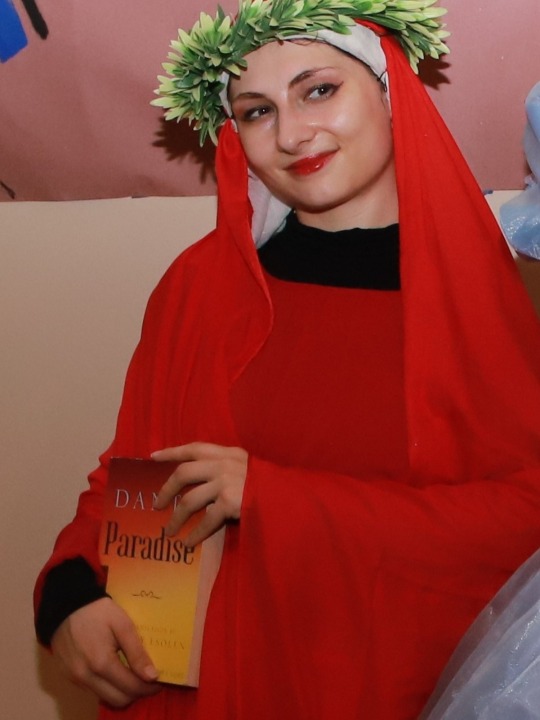


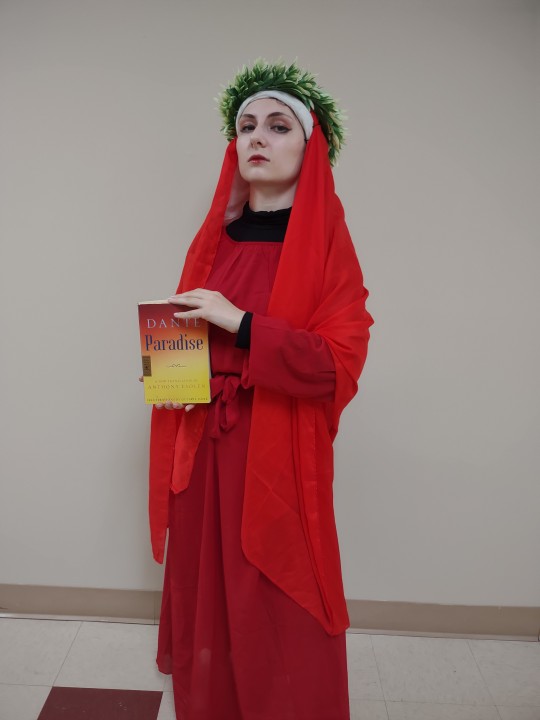

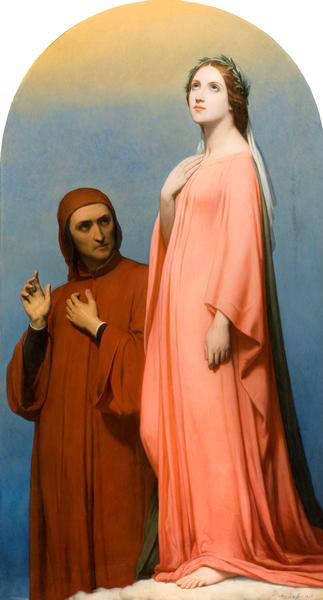
More femme Dante cosplay photos. I'm really surprised at the amount of Divine Comedy fans are on Tumblr. 😁
I'll go back to posting memes, but this still fits the literary theme of this account.
#dante#dante alighieri#literature#italian literature#letteratura#letteratura italiana#beatrice portinari#virgilio#virgil#cosplay#literature cosplay#halloween#genderswap#genderbend#medieval#middle ages#catholic
32 notes
·
View notes
Text
ok but making someone like Dulcie join choir is evil. She’s so tall and awkward and she moves like she just bought her body and hasn’t figured out how to work it yet. Why would you put her in that setting. Cath needs to have her own five year crushing guilt arc over specifically the choir stuff and anytime they get into a fight Dulcie’s gotta just be like “remember when you made me join choir” but she brings it up with the same tone that Cath has when bringing up the affair
#deadloch#Listen hear me out like the affair was a singular incident#Choir happened more than once. Idk how long they were doing it but Dulcie almost certainly had to perform in front of people.#I can forgive everything else Cath does but guilting an already catholic guilt ridden lanky socially awkward middle aged butch into#Joining a choir group is just cruel#CRUEL
17 notes
·
View notes
Text
Alright uninformed rant time. It kind of bugs me that, when studying the Middle Ages, specifically in western Europe, it doesn’t seem to be a pre-requisite that you have to take some kind of “Basics of Mediaeval Catholic Doctrine in Everyday Practise” class.
Obviously you can’t cover everything- we don’t necessarily need to understand the ins and outs of obscure theological arguments (just as your average mediaeval churchgoer probably didn’t need to), or the inner workings of the Great Schism(s), nor how apparently simple theological disputes could be influenced by political and social factors, and of course the Official Line From The Vatican has changed over the centuries (which is why I’ve seen even modern Catholics getting mixed up about something that happened eight centuries ago). And naturally there are going to be misconceptions no matter how much you try to clarify things for people, and regional/class/temporal variations on how people’s actual everyday beliefs were influenced by the church’s rules.
But it would help if historians studying the Middle Ages, especially western Christendom, were all given a broadly similar training in a) what the official doctrine was at various points on certain important issues and b) how this might translate to what the average layman believed. Because it feels like you’re supposed to pick that up as you go along and even where there are books on the subject they’re not always entirely reliable either (for example, people citing books about how things worked specifically in England to apply to the whole of Europe) and you can’t ask a book a question if you’re confused about any particular point.
I mean I don’t expect to be spoonfed but somehow I don’t think that I’m supposed to accumulate a half-assed religious education from, say, a 15th century nobleman who was probably more interested in translating chivalric romances and rebelling against the Crown than religion; an angry 16th century Protestant; a 12th century nun from some forgotten valley in the Alps; some footnotes spread out over half a dozen modern political histories of Scotland; and an episode of ‘In Our Time’ from 2009.
But equally if you’re not a specialist in church history or theology, I’m not sure that it’s necessary to probe the murky depths of every minor theological point ever, and once you’ve started where does it end?
Anyway this entirely uninformed rant brought to you by my encounter with a sixteenth century bishop who was supposedly writing a completely orthodox book to re-evangelise his flock and tempt them away from Protestantism, but who described the baptismal rite in a way that sounds decidedly sketchy, if not heretical. And rather than being able to engage with the text properly and get what I needed from it, I was instead left sitting there like:
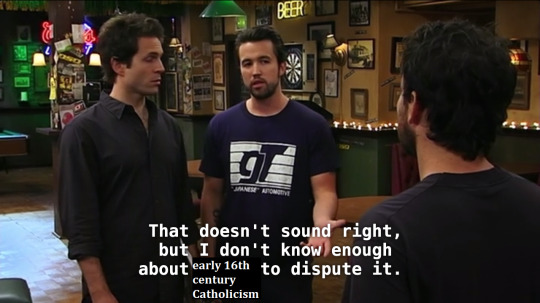
And frankly I didn’t have the time to go down the rabbit hole that would inevitably open up if I tried to find out
#This is a problem which is magnified in Britain I think as we also have to deal with the Hangover from Protestantism#As seen even in some folk who were raised Catholic but still imbibed certain ideas about the Middle Ages from culturally Protestant schools#And it isn't helped when we're hit with all these popular history tv documentaries#If I have to see one more person whose speciality is writing sensational paperbacks about Henry VIII's court#Being asked to explain for the British public What The Pope Thought I shall scream#Which is not even getting into some of England's super special common law get out clauses#Though having recently listened to some stuff in French I'm beginning to think misconceptions are not limited to Great Britain#Anyway I did take some realy interesting classes at uni on things like marriage and religious orders and so on#But it was definitely patchy and I definitely do not have a good handle on how it all basically hung together#As evidenced by the fact that I've probably made a tonne of mistakes in this post#Books aren't entirely helpful though because you can't ask them questions and sometimes the author is just plain wrong#I mean I will take book recommendations but they are not entirely helpful; and we also haven't all read the same stuff#So one person's idea of what the basics of being baptised involved are going to radically differ from another's based on what they read#Which if you are primarily a political historian interested in the Hundred Years' War doesn't seem important eonugh to quibble over#But it would help if everyone was given some kind of similar introductory training and then they could probe further if needed/wanted#So that one historian's elementary mistake about baptism doesn't affect generations of specialists in the Hundred Years' War#Because they have enough basic knowledge to know that they can just discount that tiny irrelevant bit#This is why seminars are important folks you get to ASK QUESTIONS AND FIGURE OUT BITS YOU DON'T UNDERSTAND#And as I say there is a bit of a habit in this country of producing books about say religion in mediaeval England#And then you're expected to work out for yourself which bits you can extrapolate and assume were true outwith England#Or France or Scotland or wherever it may be though the English and the French are particularly bad for assuming#that whatever was true for them was obviously true for everyone else so why should they specify that they're only talking about France#Alright rant over#Beginning to come to the conclusion that nobody knows how Christianity works but would like certain historians to stop pretending they do#Edit: I sort of made up the examples of the historical people who gave me my religious education above#But I'm now enamoured with the idea of who actually did give me my weird ideas about mediaeval Catholicism#Who were my historical godparents so to speak#Do I have an idea of mediaeval religion that was jointly shaped by some professor from the 1970s and a 6th century saint?#Does Cardinal Campeggio know he's responsible for some much later human being's catechism?#Fake examples again but I'm going to be thinking about that today
128 notes
·
View notes
Text

#catholic#christianity#folk catholicism#blessed virgin mary#catholic aesthetic#middle ages#hildegard von bingen#catholicism
211 notes
·
View notes
Text

A high middle aged Catholic religious painting of St. Gertrude the Great. Artist unknown. I hope this holds you over until I can post regularly. I'm also reading the book " The Life and Revelations of St. Gertrude the Great.
#traditional catholicism#traditional catholic images#middle ages catholic religious art#middle ages catholism#traditional catholic saints images#traditional catholic saints#st. gertrude the great#traditional catholic saints writers#traditional catholic spiritual writers#traditional catholic spiritual books#the life and revelations of st. gertrude the great
27 notes
·
View notes
Text

Wild Goats, Horns Interlocked
Detail from “The Ashmole Bestiary”
1511 (Bodleian Library)
#art history#art#history#european art#medieval#medieval art#middle ages#animals#catholic art#illuminated manuscript#illustrated manuscript#early medieval#medieval manuscripts#medieval history#goats
772 notes
·
View notes
Text
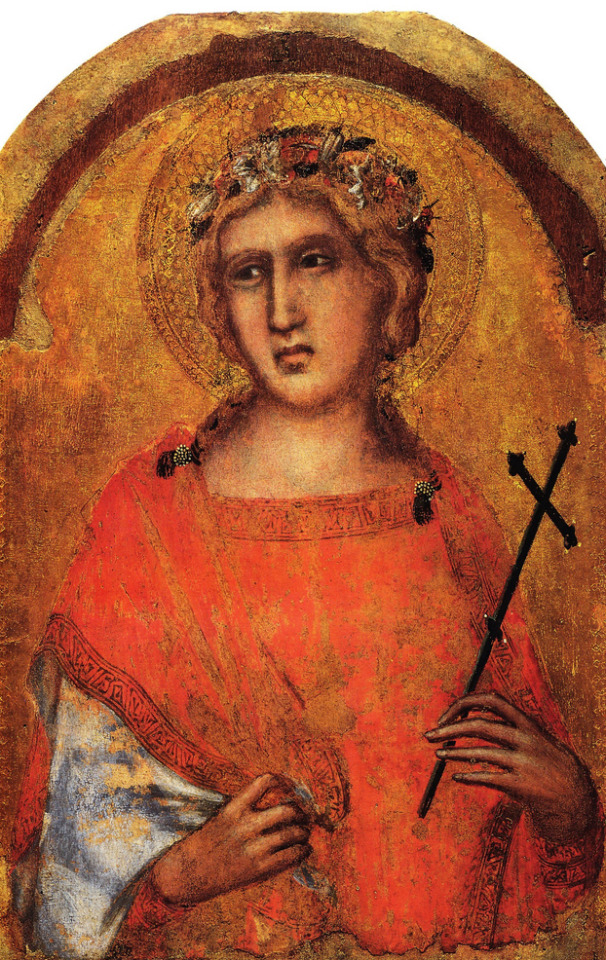
St. Cecilia by Pietro Lorenzetti, 1340s.
23 notes
·
View notes
Text
i'm not saying that a venn diagram of the demographics you're likely to run into at a ren/medieval faire and the demographics you're likely to run into at an american episcopal church would just be a circle, but I am actually saying that exact thing.
#nerds gays people who were raised roman catholic and people who know more than they should about the middle ages#episcopalian#gonna be posting about the episcopal church for a bit cause im getting confirmed on palm sunday
10 notes
·
View notes
Text
Such medieval "reliquaries" — containers or shrines for the bones or other relics of saints. This pendant is a phylactery — a type of amulet — that housed saintly relics and was supposed to give protection to those who wore it
The Garbage pit it was found is in a court at a noble palace that dated from the High Baroque period in the early 17th century. Though it contained mostly pottery, the pendant was found in a layer of the pit that dated to the 14th century.
Pendant's distinctive artistic style of the pendant suggests that it dates to the 12th century, and that it was already old when it was thrown away.Probably crafted in the workshop near the city of Hanover, about 175 miles north of Mainz, that is known to have made similar objects.
#history#archeology#archeologicalsite#discovery#medieval#middle ages#pendant#reliquary#amulet#German#cath#catholic
22 notes
·
View notes